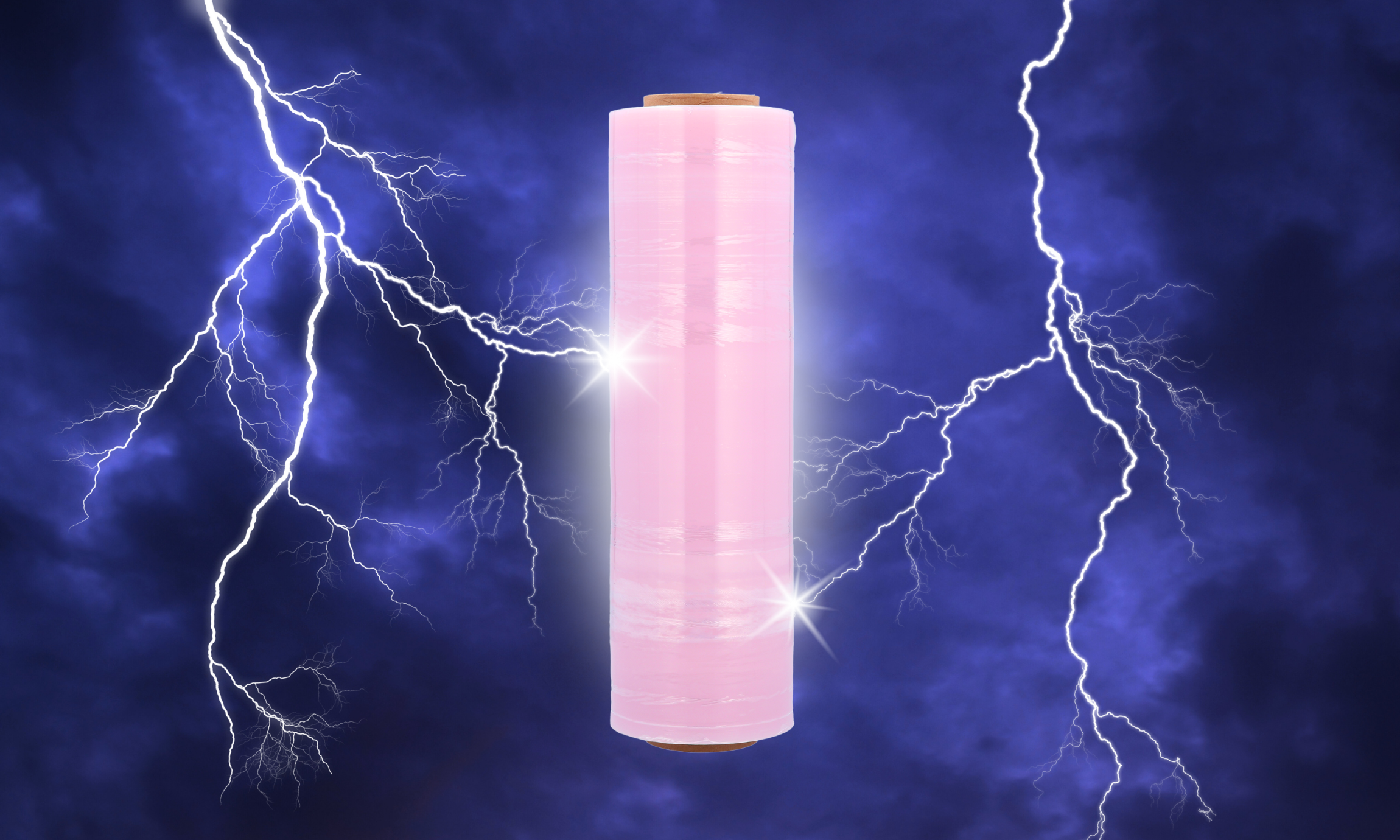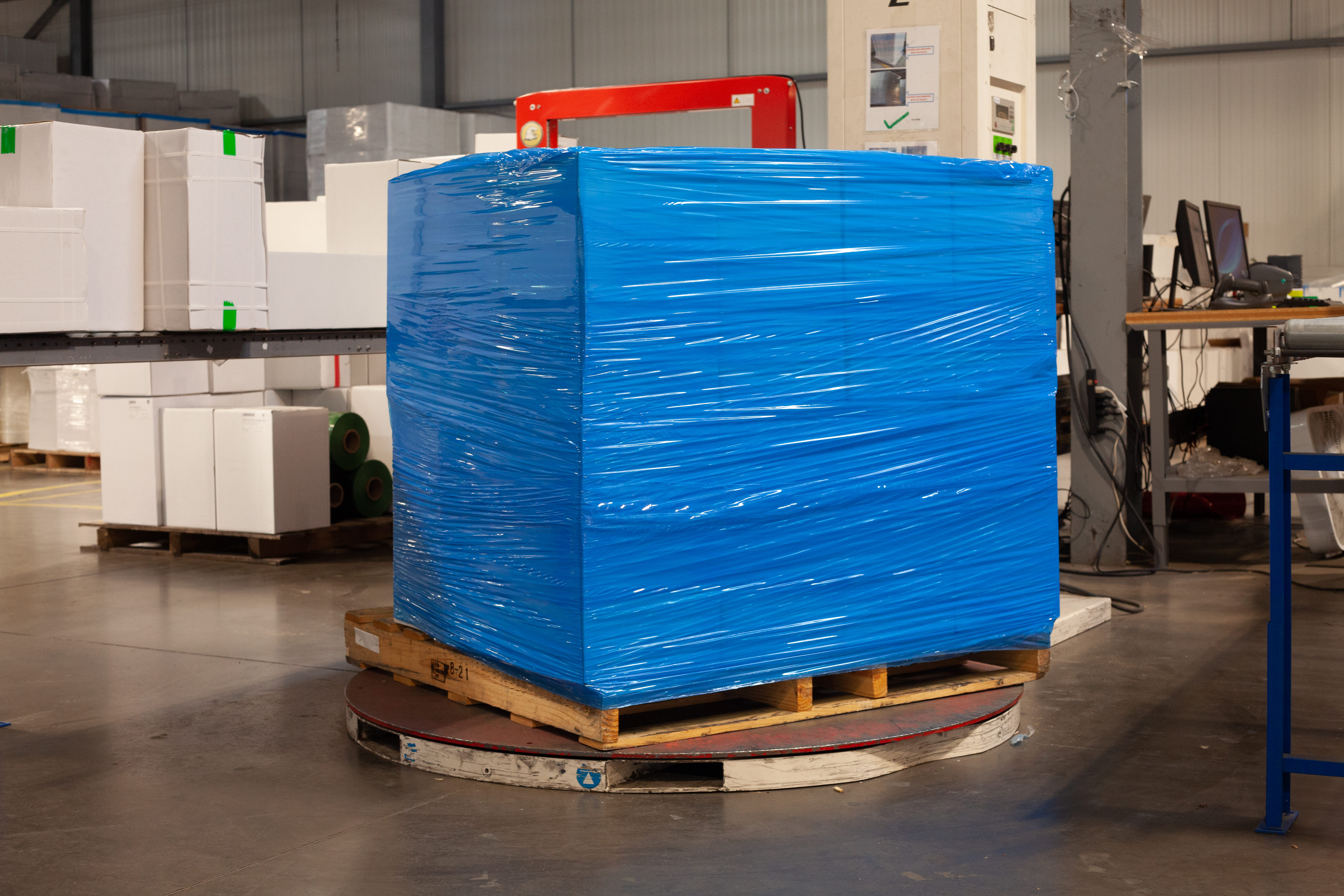Electrostatic Discharge, or ESD, can be devastating in packaging and shipping. This issue is no more prevalent than in the world of electronics and flammables, where items are incredibly sensitive to static shock. In fact, experts estimate the global cost of ESD damage to be around $5 billion per year.
Unfortunately, a common culprit for this is none other than the packaging. When you unwind a roll of packing tape or place two stretch-wrapped pallets too close to each other, the surface friction can build static electricity; your packaging can end up harming your goods instead of protecting them!
Fortunately, there is a solution: anti-static packaging. Materials like anti-static stretch wrap are specially manufactured and chemically treated to resist ESD. In this shocking article, we will cover how electrostatic discharge works and how anti-static stretch film prevents ESD damage.
What is ESD?
If you remember from your fourth grade science class, everything is comprised of atoms. Atoms themselves are comprised of positively charged protons, negatively charged electrons, and chargeless neutrons. Normally, atoms have a balanced number of protons and electrons and therefore have no charge.
However, atoms can easily become charged by gaining or losing their electrons. This usually happens through a series of contacts and separations, such as releasing a roll of tape or rubbing two plastic-wrapped items together. When atoms transfer electrons, they immediately seek to be balanced again. So when a positively-charged object and a negatively-charged object are placed close enough to each other, they will rapidly transfer electrons in a process called Electrostatic Discharge, or ESD. Whenever you get zapped reaching for a doorknob or taking off a fuzzy sweater, you are experiencing ESD.
For further information on ESD and the kinds of damage it can impart on products, be sure to check out this article from DesignSpark.

How Does Anti-Static Stretch Wrap Work?
Anti-static stretch wrap is made from low-density polyethylene (LDPE). During its manufacturing, the plastic film is treated with a humectant additive; humectants are substances that attract water and are commonly used in personal care products, such as skin lotions and shampoo. The stretch film is also tinted pink to distinguish its anti-static properties.
The stretch wrap, infused with the humectant additive, pulls water molecules from the air to create a protective molecular layer around the film. This molecular shield effectively dissipates any environmental static, significantly reducing the chances of ESD and product damage. And since this wrap film comes in both hand wrap and machine length sizes, users can use it to protect a wide range of electronic and/or flammable products.
No Shock, All Awe
ESD can be some nasty stuff. In fact, industry experts estimate that up to a third of all electronic product losses are caused by static discharge. The hard truth is that since all matter in the universe is made of atoms, there will always be ESD.
But we can fight back, and anti-static stretch wrap is a great weapon in our arsenal. By creating a molecular shield around sensitive products, anti-static film helps to keep damaging static at bay. Along with controlled atmosphere storage and static-suppressing metal-lined bags, anti-static stretch wrap is one of many ways we keep our most sensitive products safe and secure.
While you’re here, take a look at our selection of specialty stretch wrap products, including anti-static wrap. All of our stretch wrap products come with free shipping, so you can start protecting your goods from ESD today!
If you’re interested in reading more about our specialty stretch wrap, we have an article all about how VCI film works.







Log In